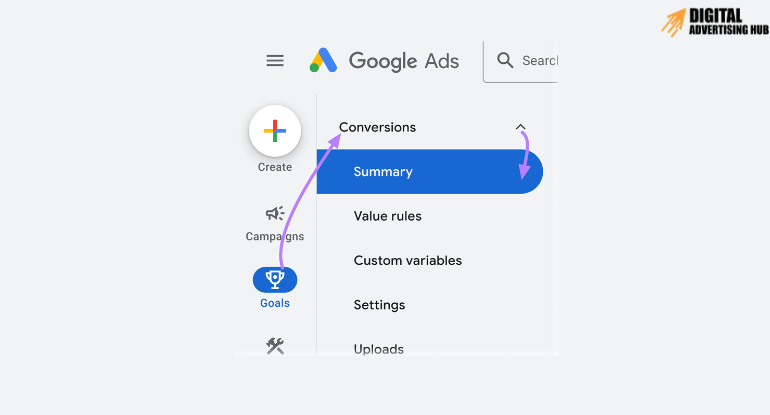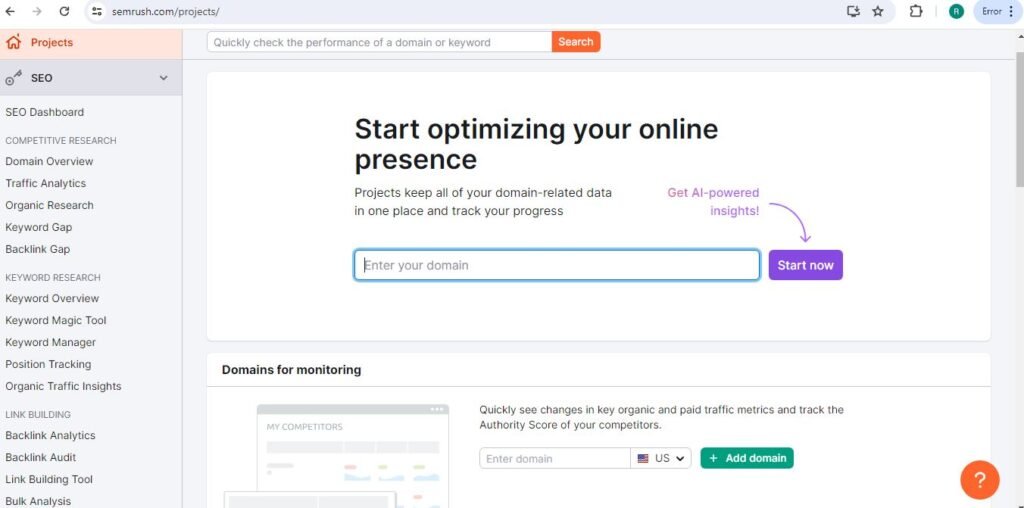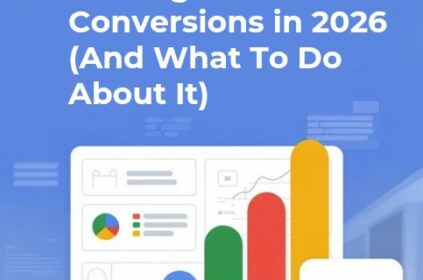Are you concerned that your Google Ads campaigns are not delivering an optimal return on investment (ROI)? This is a common challenge faced by many advertisers. Fortunately, there are well-established practices that can significantly improve the effectiveness of your Google Ads campaigns.
A key metric for measuring campaign success is return on ad spend (ROAS). ROAS indicates the amount of revenue generated for each dollar invested in your campaigns. By implementing strategies that maximize ROAS, you can ensure that your advertising budget is utilized efficiently.
This blog post will provide you with eight essential Google Ads best practices that can significantly enhance your ROAS. These practices are valuable for both experienced digital marketers and those new to the field. By following these guidelines, you can develop high-performing campaigns that attract a targeted audience and convert clicks into valuable conversions. Let’s delve into these practices and unlock the full potential of your Google Ads campaigns.
8 Google Ads Best Practices to Maximize Return on Ad Spend
#1. Install Conversion Tracking
Before optimizing your campaigns, you need a clear understanding of what constitutes success. Conversion tracking in Google Ads plays a crucial role in achieving this. It allows you to measure specific actions users take on your website after clicking your ad, such as making a purchase, signing up for a newsletter, or downloading a white paper.
Imagine you run a shoe store and advertise your latest running shoe collection. Conversion tracking can tell you how many people who clicked your ad actually added a pair of shoes to their cart and completed the purchase. Without this data, you’d be operating in the dark, unsure whether your ads are attracting the right audience or driving valuable sales.
There are various conversion types you can track in Google Ads, depending on your campaign goals. Here are a few common examples:
#1. Website Sales: This tracks completed online purchases, providing a direct measure of your return on investment.
#2. Lead Generation: This tracks form submissions, indicating potential customer interest.
#3. Phone Calls: This tracks calls generated from your ads, valuable for businesses with a strong phone sales presence.
Setting up conversion tracking is a straightforward process within the Google Ads interface. Here’s a basic overview of the steps involved:
Step 1: Navigate to your Google Ads account, go to “Goals” > “Conversions” > “Summary.”

Step 2: Click the blue “New conversion action” button in the middle of the screen.

Step 3: Choose “Website” as the conversion source. Google Ads will attempt to automatically detect any existing conversion tracking tags on your site.

Step 4: Enter the URL for website where you want to measure your conversions.

Step 5: Click “Add a conversion action manually.” Follow the on-screen instructions to either set up conversion tracking with a Google Tag or use Google Tag Manager (if you have it implemented on your website).

By implementing conversion tracking and following these steps, you gain invaluable insights into campaign performance and can optimize strategies to maximize conversions that align with your business objectives.
#2. Organize Your Google Ads Account: Building a Foundation for Success
A disorganized Google Ads account is like a cluttered toolbox – finding the right tool for the job becomes a frustrating struggle. In contrast, a well-structured account functions smoothly, allowing you to manage campaigns efficiently and optimize for maximum impact. Here’s how a well-organized structure empowers you:
#1. Enhanced Campaign Management: Imagine having dozens of campaigns scattered across your account, each with various settings and targeting parameters. Monitoring performance and making adjustments would be a time-consuming nightmare.
By organizing campaigns into clear hierarchies, you gain a birds-eye view of your overall strategy. Think of it like categorizing your toolbox – screwdrivers go in one drawer, wrenches in another. This streamlined structure allows you to quickly locate specific campaigns, analyze their performance, and make data-driven decisions for optimization.
#2. Efficient Budget Allocation: Not all campaigns are created equal. Some may target high-value conversions, while others focus on brand awareness. A well-organized account structure allows you to allocate budgets strategically.
For example, you might allocate a larger portion of your budget to a campaign driving direct sales compared to one focused on brand building. This targeted budget allocation ensures you’re not wasting resources on campaigns that require less financial investment.
#3. Improved Targeting: Imagine showing an ad for hiking boots to someone searching for running shoes. A disorganized account structure can lead to such irrelevant targeting. By structuring campaigns and ad groups around specific themes or product categories, you can ensure your ads reach a highly relevant audience.
Think of it like labeling your toolbox drawers – “Screwdrivers for electronics” or “Wrenches for furniture assembly.” Clear labeling ensures you’re using the right tool for the right job, and in Google Ads, the right tool is the right ad for the right audience.
Here’s how to implement these best practices for a winning account structure:
1. Campaign Hierarchy: Organize your campaigns by overarching marketing objectives. For instance, create separate campaigns for brand awareness, lead generation, and e-commerce sales. This allows you to tailor settings, targeting, and budget allocation to each specific goal.
2. Ad Group Specificity: Within each campaign, create focused ad groups that share a central theme. For example, within a “Running Shoes” campaign, you might have separate ad groups for “Trail Running Shoes,” “Lightweight Running Shoes,” and “Cushioned Running Shoes.” This ensures your keywords and ad copy are highly relevant to the specific audience searching for each type of shoe.
3. Keyword Relevancy: Don’t just stuff a bunch of keywords into an ad group. Each keyword within an ad group should be highly relevant to the theme of the ad group and the products or services it promotes. This ensures your ads are triggered by relevant searches, leading to a more engaged audience and improved click-through rates (CTR).
#7. Utilize Labels: Think of labels as tags you can add to your campaigns and ad groups for easy identification and performance analysis. For instance, you might label a campaign “New Customer Acquisition” or an ad group “High-Volume Keywords.” These labels allow you to quickly filter and analyze specific sets of campaigns or ad groups, saving you time and streamlining your optimization efforts.
By implementing these best practices, you transform your Google Ads account from a disorganized mess into a well-structured system. This foundation allows you to manage campaigns more effectively, target your ideal audience with laser focus, and ultimately achieve your desired advertising goals.
#3. Analyze the Competition

In the ever-evolving world of online advertising, staying one step ahead is critical for success. Competitor analysis for Google Ads is a powerful tool that allows you to peek behind the curtain of your rivals’ strategies, gleaning valuable insights that can inform and refine your own campaigns.
Here’s a deeper look at how competitor analysis can empower your Google Ads strategy:
#1. Identify Lucrative Keyword Opportunities: Imagine a hidden goldmine brimming with potential customers. Competitor analysis can act as your treasure map, revealing keywords your competitors are leveraging that you might be missing. By incorporating these relevant keywords into your own campaigns, you can expand your reach and attract a wider audience actively searching for products or services like yours.
#2. Uncover the Anatomy of Compelling Ad Copy: What makes an ad click-worthy? Competitor analysis can provide valuable clues. By dissecting the messaging and calls to action (CTAs) used in your competitors’ top-performing ads, you can gain inspiration for crafting even more effective ad copy for your own campaigns.
Are your competitors using strong verbs and emotional triggers to capture attention? Do their CTAs clearly communicate the value proposition and motivate users to click? By analyzing these elements, you can learn from their successes and incorporate winning strategies into your own ad creation process.
#3. Learn from Landing Page Best Practices: The journey doesn’t end with a click. Understanding where your competitors are directing users after they click on their ads can be highly informative. By analyzing their landing pages, you can gain insights into the type of content and design elements that convert well within your industry.
Are they showcasing clear product benefits with high-quality visuals? Do their landing pages offer a seamless user experience optimized for conversions? By learning from their landing page strategies, you can optimize your own landing pages to maximize the value of your hard-earned ad clicks.
There are various free and paid tools available to equip you for effective competitor analysis. Here are a couple of options to consider:
#1. Auction Insights Report (within Google Ads): This built-in treasure trove provides a window into some of your competitors’ activity. Imagine having a spyglass into their war room! You can see which competitors are vying for the same keywords as you, along with valuable metrics like impression share, average position, and overlap rate.
This data allows you to assess the competitive landscape for your target keywords and identify areas where you might need to adjust your bidding strategies to outrank competitors.
#2. SEMrush: For a more comprehensive analysis, consider SEMrush, a paid tool that offers a powerful competitor analysis suite. Think of it as a high-powered microscope for dissecting competitor strategies.

SEMrush can provide estimated competitor budgets, reveal their top organic keywords (valuable for informing your content marketing strategies), and even allow you to analyze variations of their ad copy to see what messaging resonates best with their audience.
Remember, the goal of competitor analysis isn’t to become a copycat. It’s about learning from both their successes and failures to inform and refine your own unique strategy. Here are some actionable tips to put competitor analysis into practice:
1. Identify Your Archrivals: The first step is to pinpoint the companies that compete most directly with your offerings. Who are the ones vying for the same slice of the market pie? Once you’ve identified your top competitors, you can focus your analysis efforts on their strategies.
2. Focus on Key Areas: While there’s a vast amount of information to potentially glean from competitor analysis, prioritize the areas that will have the most significant impact on your campaigns. Focus on analyzing competitor keywords, ad copy elements, and landing page strategies. These insights can be directly applied to optimize your own campaigns and achieve better results.
3. Look for Trends and Patterns: Don’t get bogged down in the minutiae of analyzing every single ad your competitors have running. Instead, take a step back and identify recurring themes and patterns across their strategies. Are there specific keywords they consistently use across multiple campaigns? Do their ad copy elements tend to follow a specific formula? By identifying these trends and patterns, you can gain valuable insights into their overall approach and develop counter-strategies to give you a competitive edge.
By incorporating competitor analysis into your Google Ads routine, you gain valuable intel that can elevate your campaigns and propel you ahead of the competition in the online advertising landscape.
#4. Craft Compelling Ad Copy: The Words That Convert
In the bustling online marketplace, attention spans are short, and competition is fierce. Your Google Ads need to grab attention quickly and entice users to click. This is where compelling ad copy comes into play.
Effective ad copy acts like a persuasive salesperson in a crowded digital marketplace, convincing users that your product or service is the solution they’ve been searching for.
Here’s why crafting compelling ad copy is crucial for your Google Ads success:
#1. Increased Click-Through Rates (CTR): Enticing ad copy motivates users to click, driving more traffic to your website or landing page.
#2. Improved Quality Score: Google rewards relevant and high-quality ads with a lower cost-per-click (CPC), ultimately saving you money on your campaigns.
#3. Enhanced Brand Messaging: Effective ad copy allows you to communicate your brand’s unique value proposition and resonate with your target audience.
Here are some key elements to consider when crafting compelling ad copy for your Google Ads:
#1. Headlines that Hook: Your headlines are like the first impression you make – they need to be captivating and grab attention within seconds. Use strong verbs, highlight unique selling points (USPs), and consider including a call to action (CTA) within the headline itself.
#2. Clear and Concise Descriptions: Expand upon your headlines in the description line, providing users with a clear understanding of what you offer and how it benefits them. Focus on the most compelling aspects of your product or service and keep the language clear and concise.
#3. Keyword Integration: Don’t forget about the importance of including relevant keywords throughout your ad copy. This ensures your ads are triggered by relevant searches and improves the overall relevance of your ad to the user’s query.
#4. Compelling Calls to Action (CTAs): Tell users exactly what you want them to do next, whether it’s visiting your website, downloading a white paper, or signing up for a free trial. Use strong action verbs and clear CTAs to encourage clicks and conversions.
A/B testing is your friend when it comes to crafting compelling ad copy.
This process involves testing different variations of your headlines, descriptions, and CTAs to see which versions resonate best with your target audience. By continuously testing and refining your ad copy, you can optimize your campaigns for maximum click-through rates and ultimately achieve your advertising goals.
#5. Optimize Your Landing Pages
Imagine a beautifully designed store window that entices you to enter, only to find a cluttered mess inside. That’s what happens when your Google Ads have compelling copy but lead to poorly optimized landing pages.
The landing page is the final destination your ad directs users to, and it needs to be designed to seamlessly convert clicks into conversions.
Here’s why optimizing your landing pages is crucial for maximizing the return on ad spend (ROAS) for your Google Ads campaigns:
#1. Enhanced User Experience: A well-optimized landing page provides a clear, focused, and positive user experience, guiding visitors towards the desired action.
#2. Improved Conversion Rates: By removing distractions and ensuring a clear path to conversion, you can significantly increase the percentage of users who take the desired action after clicking on your ad.
#3. Alignment with Ad Message: Your landing page content and messaging should directly correspond to the promises made in your ad copy. This creates a sense of continuity and builds trust with potential customers.
Here are some key elements for optimizing your landing pages to support your Google Ads campaigns:
#1. Compelling Headline: Reiterate the core message from your ad in a clear and concise headline that grabs attention and reinforces the value proposition.
#2. Benefit-Oriented Content: Focus on the benefits your product or service offers to the user. Clearly communicate how it solves their problems or fulfills their needs.
#3. Strong Visuals: High-quality visuals like images and videos can significantly enhance user engagement and make your landing page more visually appealing.
#4. Clear Call to Action (CTA): Don’t leave users guessing about what to do next. Include a prominent and clear CTA that aligns with the goal of your ad campaign.
#5. Mobile-Friendliness: In today’s mobile-first world, ensuring your landing page is optimized for mobile devices is crucial. This means a responsive design that adapts seamlessly to different screen sizes.
By following these practices and focusing on user experience and clear calls to action, you can transform your landing pages from conversion roadblocks into conversion powerhouses, maximizing the return on investment from your Google Ads campaigns.
#6. Maintain a Negative Keyword List
Imagine casting a fishing net and hoping to catch a specific type of fish, only to find your net overflowing with unwanted seaweed and pebbles. That’s what happens when your Google Ads campaigns lack a well-maintained negative keyword list.
Negative keywords act like a filter, preventing your ads from being triggered by irrelevant search terms that won’t convert into valuable leads or sales.
Here’s why maintaining a negative keyword list is essential for optimizing your Google Ads campaigns:
#1. Reduced Cost-per-Click (CPC): By preventing your ads from showing for irrelevant searches, you can significantly lower your CPC. You’re essentially paying only for clicks from users genuinely interested in what you offer.
#2. Improved Quality Score: Google rewards highly relevant ads with a better quality score, which translates to lower CPCs and better ad placement. A negative keyword list helps ensure your ads are only shown for relevant searches, improving your overall quality score.
#3. Enhanced Campaign Focus: By eliminating irrelevant clicks, you can focus your campaigns on attracting a more targeted audience, ultimately leading to a higher conversion rate.
Here are some tips for identifying and adding negative keywords to your Google Ads campaigns:
#1. Utilize the Search Terms Report: This report provides valuable insights into the actual search terms users are entering that trigger your ads. By analyzing this report, you can identify irrelevant search terms that are wasting your budget and add them as negative keywords.
#2. Consider Audience Insights: Audience insights within Google Ads offer valuable data on your audience demographics and interests. Use this information to identify search terms that might attract the wrong audience and add them as negative keywords.
#3. Think Like Your Customers: Put yourself in the shoes of your target audience and consider what search terms they might use that are irrelevant to your offerings. Proactively add these potential irrelevant terms as negative keywords.
Remember, maintaining a negative keyword list is an ongoing process. Regularly review your search terms report and audience insights to identify new irrelevant terms and continually refine your negative keyword list. This ensures your campaigns are laser-focused on attracting the right audience, maximizing your return on ad spend.
#7. Take Advantage of Ad Extensions
Imagine having a tiny billboard on a busy highway to promote your business. Now imagine that billboard could display additional information like your phone number, location, and website link. That’s the power of ad extensions in Google Ads!
They essentially supercharge your ads by providing users with more value and increasing their visibility within the search results page.
Here’s why leveraging ad extensions is crucial for maximizing the impact of your Google Ads:
#1. Increased Click-Through Rates (CTR): Ad extensions provide users with more information about your business directly within the ad itself. This can entice them to click through rather than scrolling past your ad.
#2. Improved User Experience: Ad extensions make it easier for users searching for your product or service to find the information they need, such as your phone number for a quick call or your location for a visit to your store. This enhances the overall user experience and can lead to more conversions.
#3. Stand Out from the Competition: By utilizing various ad extensions, your ads become more visually appealing and informative compared to basic text ads. This can help you stand out from the competition and grab user attention within the search results page.
Here are some of the most beneficial ad extensions to consider for your Google Ads campaigns, along with specific examples:
#1. Sitelink Extensions: These extensions showcase additional links to relevant pages on your website, allowing users to navigate directly to the information they seek. For example, a clothing store might include sitelink extensions for “Men’s Clothing,” “Women’s Clothing,” and “New Arrivals.”
#2. Call Extensions: Make it easy for users to connect with you directly by displaying your phone number within the ad. This is particularly valuable for businesses with a strong focus on phone inquiries. For instance, a restaurant might include a call extension with their phone number displayed prominently.
#3. Location Extensions: Showcase your business address and even a map directly within the ad, allowing users to easily find your physical location. A local bakery might utilize a location extension to display their address and a mini-map to their storefront.
#4. Callout Extensions: Highlight key features, benefits, or unique selling points of your offerings with short text snippets directly within the ad. An online language learning platform might include callout extensions such as “Learn from Native Speakers,” “Flexible Learning Options,” and “Free Trial Available.”
Remember, there are various other ad extensions available, and the best choices for your campaigns will depend on your specific goals and industry. Experiment with different extensions and track their performance to see what resonates best with your target audience.
By incorporating ad extensions into your Google Ads strategy, you can significantly enhance your ad real estate, improve click-through rates, and ultimately drive more conversions from your campaigns.
#8. Test Location Targeting and Ad Scheduling
Imagine running a summer camp ad campaign throughout the entire year. While technically reaching a broad audience, it wouldn’t be very effective during winter months. The same principle applies to Google Ads campaigns – for optimal results, you need to target the right locations and schedule your ads to appear when your target audience is most likely to be searching.
Here’s why testing location targeting and ad scheduling is crucial for maximizing the return on ad spend (ROAS) for your campaigns:
#1. Focus on Relevant Audiences: By targeting specific locations where your ideal customers reside, you ensure your ads reach the most relevant audience, leading to a higher chance of conversions.
#2. Optimize Budget Allocation: Focus your budget on areas with a higher potential return. For instance, a brick-and-mortar store might allocate a larger budget to campaigns targeting users within a specific driving distance of their store.
#3. Align with User Behavior: Schedule your ads to appear during the times of day or days of the week when your target audience is most likely to be searching for your products or services.
Here are some key considerations for testing location targeting and ad scheduling in your Google Ads campaigns:
#1. Location Targeting: Target by country, region, specific city, or even radius around your physical location. Consider demographics and user behavior within targeted locations to maximize relevance.
#2. Ad Scheduling: Analyze user search patterns and experiment with scheduling your ads to appear during specific times of day or days of the week. For example, a business-to-business service might see better results with ads displayed during weekdays during work hours.
By utilizing Google Ads’ location targeting and ad scheduling features, you can ensure your ads reach the right audience at the right time. This targeted approach allows you to optimize your campaigns for maximum impact and ultimately achieve a higher return on your advertising investment.
Here are some additional tips for testing location targeting and ad scheduling:
#1. Start Broad and Refine: Begin with a broader targeting approach and gradually refine your locations and scheduling based on campaign performance data.
#2. Utilize Time Zone Settings: If your target audience spans multiple time zones, consider using ad scheduling time zones to ensure your ads appear during relevant hours for each location.
#3. Track and Analyze Performance: Continuously monitor the performance of your location targeting and ad scheduling strategies. Use the insights gained to refine your approach and optimize your campaigns for better results.
By following these practices and testing different location targeting and ad scheduling options, you can ensure your Google Ads campaigns reach the right audience at the right time, leading to a significant improvement in your return on ad spend.
Conversion Tracking Beyond the Sale: Measuring the Full Customer Journey
Traditionally, conversion tracking in Google Ads focused on actions directly tied to revenue generation, like online purchases. However, the customer journey often involves multiple touchpoints before a final decision is made. Here’s where conversion tracking expands its reach to provide a more comprehensive understanding of your marketing funnel’s effectiveness.
By implementing advanced conversion tracking techniques, you gain valuable insights into various user actions beyond the immediate sale. This allows you to optimize your campaigns for the entire customer journey, nurturing leads and guiding them towards conversion.
Here’s how expanding conversion tracking beyond the sale benefits your Google Ads strategy:
#1. Identify Valuable User Interactions: Track actions like newsletter signups, white paper downloads, or video engagement. These micro-conversions indicate user interest and can be nurtured further down the sales funnel.
#2. Optimize for Different Campaign Goals: Tailor your campaigns to address specific stages of the customer journey. For example, an ad focused on brand awareness might track video views, while a retargeting campaign might prioritize add-to-cart actions.
#3. Measure the Full Value Chain: By tracking various conversion points, you gain a holistic view of your marketing funnel’s effectiveness. This allows you to identify areas for improvement and optimize campaigns to nurture leads and drive conversions throughout the entire customer journey.
Here are some advanced conversion tracking techniques to consider implementing in your Google Ads campaigns:
#1. Website Tracking: Expand website tracking beyond purchases to include form submissions, button clicks, or page visits to specific content sections.
#2. App Downloads and Engagement: Track app downloads and key in-app actions to understand user behavior within your mobile app.
#3. Phone Call Conversions: Track calls generated from your ads to understand the value of phone inquiries for your business.
#4. Offline Conversions: For businesses with both online and offline sales channels, integrate offline conversion tracking to capture sales completed via phone calls or in-store visits.
By implementing these advanced tracking techniques, you gain a deeper understanding of how users interact with your brand across various touchpoints. This empowers you to optimize your Google Ads campaigns for the entire customer journey, attracting new leads, nurturing their interest, and ultimately guiding them towards conversion.
Remember, conversion tracking is an ongoing process. Regularly analyze your data, identify areas for improvement, and refine your tracking strategy to gain a progressively clearer picture of your marketing funnel’s effectiveness. By wielding this data effectively, you can optimize your Google Ads campaigns to deliver exceptional results and achieve your overall marketing goals.
Conclusion
Crafting high-performing Google Ads campaigns requires a strategic approach and continuous optimization. The techniques explored in this comprehensive guide equip you with a foundational understanding of the key elements that contribute to success.
Remember, Google Ads is a dynamic platform, and staying ahead of the curve is crucial. Here are some final takeaways to keep in mind as you venture forth on your Google Ads journey:
1. Embrace Experimentation: Don’t be afraid to test different ad copy variations, landing pages, targeting strategies, and bidding approaches. Analyze the data and refine your campaigns based on what works best for your target audience.
2. Stay Informed: The world of online advertising is constantly evolving. Dedicate time to staying up-to-date on the latest Google Ads features, best practices, and industry trends.
3. Seek Continuous Improvement: Google Ads offers a wealth of data and insights. Utilize this information to continually analyze, optimize, and refine your campaigns to maximize your return on ad spend.
By following these guidelines and leveraging the strategies outlined in this guide, you can transform your Google Ads campaigns from good to great, achieving significant results and propelling your business forward in the ever-competitive online marketplace.
So, go forth, experiment, analyze, and optimize your way to Google Ads mastery!










